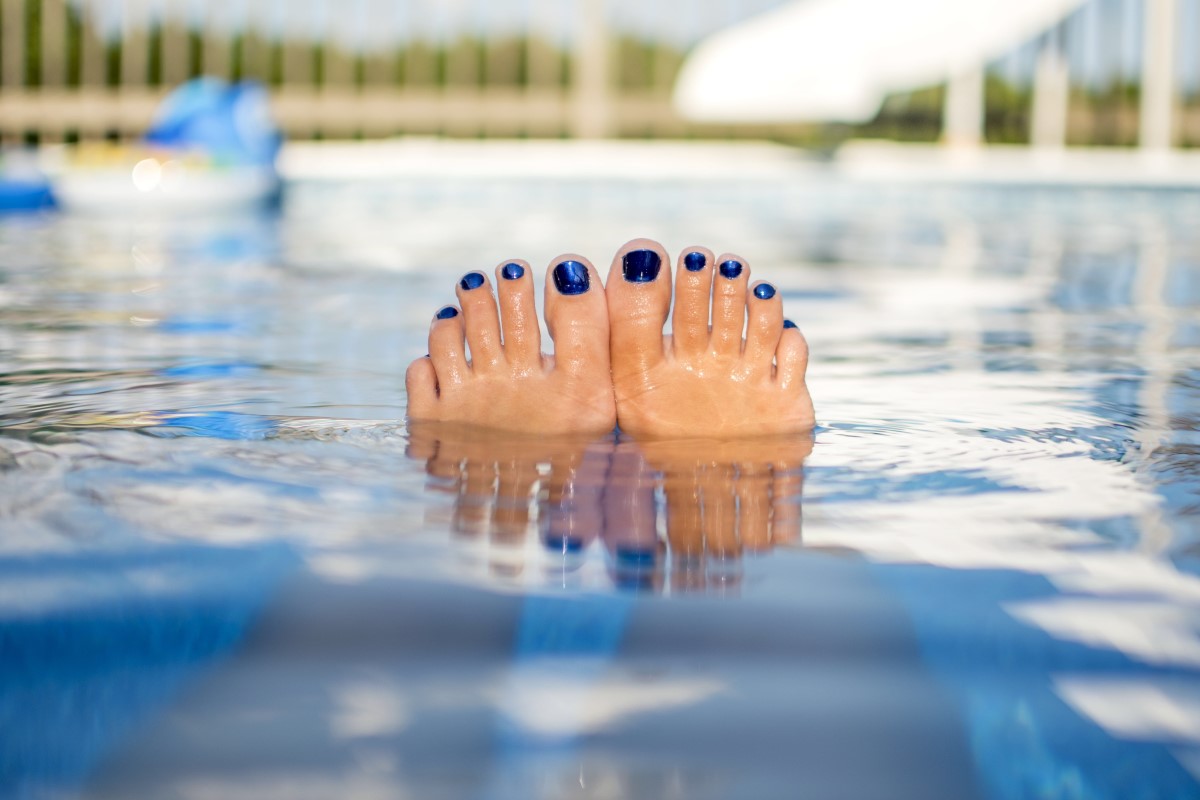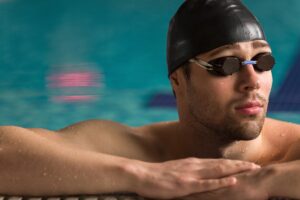
Swimming is a full body workout! Some of the benefits are reducing stress, strengthening your lungs and increasing your flexibility. Swimming can be intimidating especially if you have a fear of water. Being nervous to do something for the first time is completely normal. However, it shouldn’t stop you from doing something you might enjoy. Believing in yourself is key to getting comfortable in the water. Below is your guide to overcoming your fear of water!
Set Goals
Start small by setting goals that match your skill level. Taking on skills one step at a time can make them feel less intimidating. Here are some ways to help yourself set goals:
- Don’t rush
- Stay consistent
- Enroll in private swim lessons
Much like learning to swim, overcoming a fear takes time. For example, starting with a difficult stroke might put you in a difficult situation and make your fear worse. Getting into the water will show you it’s not so scary. Start with dipping your toes in and then work your way up to swimming longer in deeper water. No one knows the water better than someone who teaches people how to swim for a living. Working with your very own instructor can ease your mind because if something goes wrong, they will know exactly what to do.
Get Proper Equipment
Goggles that fit and a comfy swimsuit are a must! Here are some tips to choose the right pair of goggles:
- Avoid choosing goggles that are too tight
- Try on as many pairs as possible
- Choose ones with thicker padding and thicker straps
When goggles are too tight, they can create uncomfortable creases under your eyes. Additionally, they pull on the bridge of your nose letting more water in and the pressure around your eyes will make them start to hurt. You will only know which pair is right for you by trying them on. Trying out multiple pairs will let you examine the pros and cons of each option. Thicker padding makes for a softer fit and thicker straps won’t get tangled in your hair.
Start Small
Overcoming a fear of water takes time. By taking smaller steps, you can begin to overcome it. There are few ways to get accustomed to interacting with water:
- Putting your head in a bowl of water
- Start in shallow water
Do some breathing exercises using a large bowl of water. This is a great way to get used to water before hopping into the pool. Did you know this is how pro swimmers learn how to breathe? Dipping your head in and out of the water will help get you used to having water on your head and face. Over time, you can move onto blowing bubbles using your nose and mouth. 
Getting over your fear of water isn’t solved by throwing yourself into the deep end! Shallow water is safer for beginners. It’s easier to move around in because there is less resistance. It gives new swimmers time to adjust being in the water before gradually making their way over to the deep end.
Shallow End Activities
When it’s time to hop into the pool, start learning with an instructor in the shallow end. It’s a training space to get you comfortable with your abilities. Listed below are some of the movements that a swim instructor will start teaching you with:
- Breathing exercises
- Floats
- Glides
- Kicking techniques
Breathing exercises in the pool will help you learn the basics of how to breathe underwater. The proper technique is to breathe in when your head is in the water and out when you come up for air. Floating will help you stay above the water. A back float can be done by tilting your head back and laying on your back. Gliding can be done while floating by moving your arms in a circular motion to push yourself forward. Kicking comes in handy when learning a variety of strokes. It helps propel your body forward when performing skills such as the breaststroke and backstroke.
Build Up to Treading
Before learning to stroke, you should be able to tread water for 3 minutes without gasping for air. Treading water means being able to keep your head above the water using the rest of your body. This is done by moving your arms in front of you in a back-and- forth motion under the water without touching the bottom or sides of the pool. New swimmers should be introduced to treading water in a warm pool to avoid losing concentration.
Check out our video about how to tread water! It shows how to scull water with your hands and how to perform a bicycle kick. For those looking for a challenge, the whip kick and eggbeater kick are shown as well!
Put Together the Basics to Form a Stroke
Easy and comfortable strokes are the ones to start with when you begin learning. The breaststroke is the easiest stroke to learn because it takes less energy and the technique isn’t complicated.
After you learn to tread, you can move onto the freestyle stroke. Learning this stroke should be done in steps. Each part should be learned separately. Remember to keep your arms alternating in the water, your fingers together and your face underwater blowing bubbles and breathing to the side. Our video below explains how to freestyle!
Safety Comes First!
Learn all about water safety to protect yourself from injury and drowning. As you gain more confidence, you can move from the shallow end to the deep end using the stroke you are most comfortable with. With proper breathing techniques and someone like a swimming instructor or friend by your side, you can work your way up to swimming on your own.
Set More Goals!
Congratulations! You have started to gain more confidence and hopefully our steps have helped you overcome your fear of water and enjoy swimming. Like with any skill, swimming is something you get better at over time. Set more advanced goals as you get better. Swimming is a fun and healthy activity you can continue to enjoy at any age!


